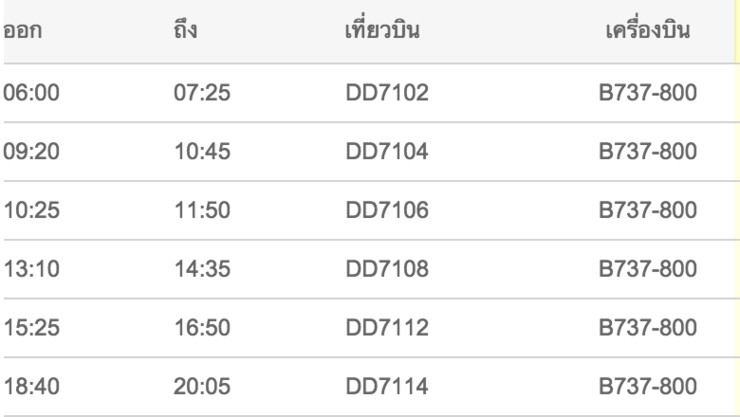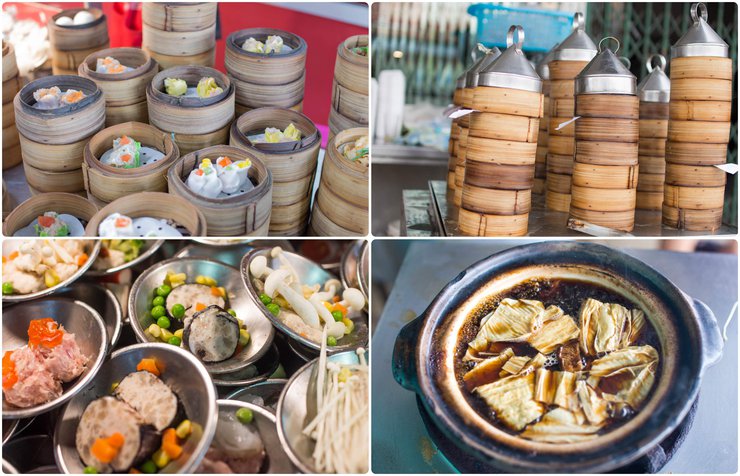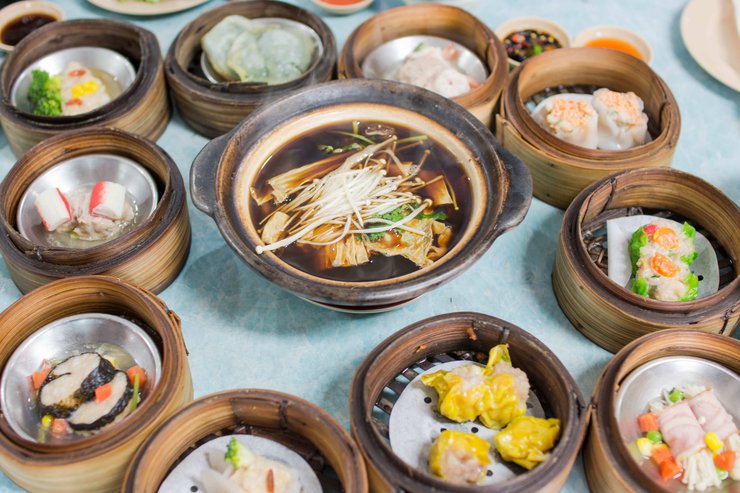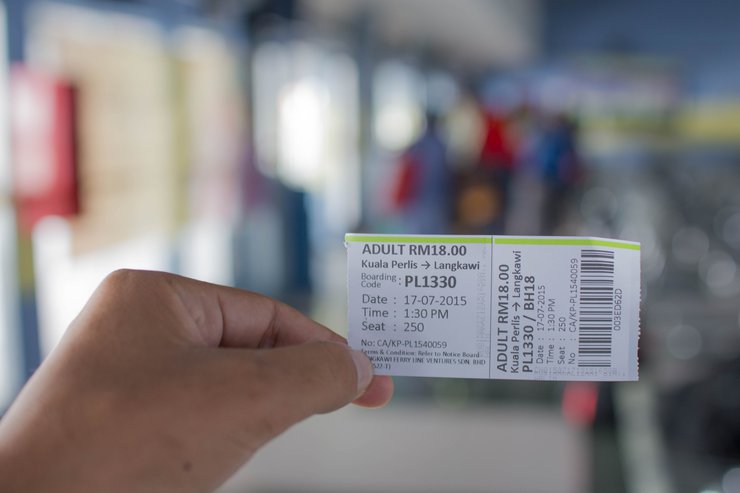Welcome back to my travel review. This time, we'll be crossing the border to nearby Langkawi, our neighboring country. We'll also explore tourist attractions in Satun province, which is not far away. Tourists can visit both places in a day trip. However, this time, I'll take you on an overnight trip to Langkawi before returning home to visit Satun province. Where will we go? Let's pack our bags and follow along!

This trip, I was invited by the Tourism Authority of Thailand (Southern Market Division) to experience tourism in a neighboring country (Langkawi) and Satun Province. Let's go south AEC. This is my first time visiting Langkawi, so there was no reason to refuse.

This trip, we used Nok Air from Don Mueang Airport, flight DD 7102 at 6:00 AM.
Of course, we had to check in 40 minutes before the flight. I don't need to tell you what time we had to wake up. It's okay, we can take a nap on the plane.
The most convenient way to travel to Langkawi is to fly directly to Hat Yai, Songkhla Province.
Nok Air has several flights available. You can find more information at
http://www.nokair.com/


After a short nap on the plane, we arrived at Hat Yai Airport. After collecting our luggage, a TAT officer picked us up. Of course, arriving in the morning like this, we had to find something to eat. And when visiting the south, if you don't eat dim sum, "it's considered wrong". So what are we waiting for? Let's go... Our destination is this restaurant: "Chok Dee Dim Sum, Branch 2".

"Lucky but rigged" - "rigged" here refers to dim sum. In addition to dim sum, another must-try dish at this restaurant is "bak kut teh".
Served piping hot with fragrant steam, it's an irresistible treat. However, to enjoy these delicacies, you'll need to arrive early and secure a table.
Be warned, the place gets packed! Once you've secured a table, note its number and then head over to order your food. In no time, steaming hot dim sum will be delivered to your table.


After a satisfying breakfast, it was time to head to Langkawi Island. However, our plans changed slightly. Initially, we were supposed to board the ferry at Tamalang Pier. However, as it was during the Islamic fasting month, the ferry schedule was reduced from three trips per day to only two. (The reason for this reduction was unclear to me.) The first ferry departed at 9:30 AM, and the second at 3:30 PM. Given the time constraints, the 9:30 AM ferry was no longer an option. Waiting for the 3:30 PM ferry would have resulted in significant time loss. Therefore, we decided to change our plan and board the ferry at Kuala Perlis Pier in Kedah, Malaysia, using the Bukit Kayu Hitam checkpoint to cross the border. This alternative route provided a convenient and efficient way to reach Langkawi Island.

After crossing the border at Sadao, we took a short car ride to the Kuala Perlis jetty. We purchased tickets to Langkawi Island for 18 ringgit each, which was approximately 180 baht at the time. The exchange rate may fluctuate slightly.

The ferry to Langkawi Island is a spacious and comfortable catamaran, offering a quick journey of just over an hour.

After a two-hour ferry ride, we arrived at the Langkawi Island pier. After checking our luggage, we walked to the taxi stand. The island is small, and most transportation is by taxi, usually on a fixed-price basis depending on the distance. The prices are not too expensive. Fortunately, this time, a team was waiting to pick us up. When we arrived at the pier, it was already past noon. We had just eaten dim sum, but we were starting to feel hungry again. Without further delay, we decided to find something to eat.


Our first meal on Langkawi Island. Today we came to Nagoya Restaurant (as I mentioned earlier, we traveled during the fasting month, most shops and restaurants are closed).
Nagoya Restaurant is a Thai restaurant. Don't misunderstand it as a Korean or Japanese restaurant. It is one of the few restaurants that are still open during the fasting month.
(So we didn't fast).
The price is reasonable.

The restaurant serves Thai food. While the appearance may not be entirely authentic, the flavors are balanced and not overly spicy compared to traditional Thai cuisine. For those who prefer a spicier experience, chili flakes are available upon request. Let's take a look at the dishes.

After leaving the Nagoya restaurant, we checked into our accommodation, unpacked, freshened up, and then set off to explore Langkawi Island.
Tonight, we checked into "Adeaia," a newly opened 4-star hotel located right on the beach.


The view from the balcony of the room overlooks the sea. It's so relaxing.

After checking in, we embarked on our sightseeing program, with our destination being the Cable Car, another prominent tourist attraction on Langkawi Island. However, don't be misled into thinking that we will be taking the boat in the picture...hehe. We stopped at a gas station to use the restroom, and even the gas station had a view to capture.

Arrival at Oriental Village: Gateway to Mat Chinchang Peak via Cable Car
We have arrived at Oriental Village, the starting point for the cable car ascent to Mat Chinchang Peak, the highest point on Langkawi Island. Towering at approximately 710 meters above sea level, this peak offers breathtaking panoramic views.

Nestled within the village, the Orialtel Village shopping center offers a diverse selection of local goods, souvenirs, amusement rides, and a Sky Dome. The village's interior boasts an oriental ambiance, complete with numerous shops and stalls selling a wide array of merchandise to commemorate your visit.

A poolside player surrounded by various shops.

After exploring the village, it's time to head to the top of Mount Machinchang by cable car.
The cable car ride is divided into 2 sections, covering a distance of 2.2 km. The journey doesn't take long,
but be prepared for potential queueing times during peak tourist seasons.

Adult cable car fare 30 RM / Child 20 RM
Open Monday-Thursday 10:00 AM - 6:00 PM
Wednesday only 12:00 PM - 6:00 PM
Friday-Saturday-Sunday 9:30 AM - 7:00 PM


On the peak of Mount Mat Chinchang, there is a viewpoint offering panoramic views.
From here, you can see the entire Langkawi Island, the Andaman Sea, and even the Tarutao Islands of Thailand.
However, the sky was not clear today, so the view was obstructed. Nevertheless, the view from the mountaintop, with its surrounding mountains and nearby islands, was still breathtaking.


The weather at the summit is highly unpredictable. While it may be hot on the way up, the temperature can drop significantly upon reaching the top. Expect alternating periods of clear skies and fog, which are natural occurrences in this environment. After spending some time taking photos at the summit, it was time to descend.

The view from the cable car, looking down at the legs below... quite a thrill.

This photo was taken from a cable car, showcasing a stunning suspension bridge stretching across two mountains.


As evening approached, we arrived at the bottom of the hill. After a short drive back to the city, we decided to grab a bite to eat before checking into our accommodation. As I mentioned earlier, we were traveling during Ramadan, which meant that only a few restaurants were open. After circling around for two rounds, we settled on this restaurant. It was bustling with customers, but we still had to wait a long time for a table.

After securing a table, we placed our order. The restaurant was bustling with customers, so we had to endure a bit of a wait. However, when the food arrived, it was well worth the wait. The flavors were exquisite and perfectly suited our palates. I don't usually praise restaurants, but if you're visiting Langkawi, I highly recommend this establishment. You won't be disappointed. Additionally, the owner, a Thai woman, was very friendly and helpful, making communication and ordering a breeze.

"Day 2" After breakfast at the hotel, today's program will take us to "Kilim National Park" to search for the majestic eagles.
Since we have arrived at Langkawi Island, we must see the local birds. We will have to take a boat into the park.
The entrance fee is charged per boat, which can accommodate 8-10 people, at approximately RM 250 per hour.


After a while on the boat, the boatman steered us to a calm spot in the middle of the canal to watch a flock of eagles.
A major tourist attraction here, and it did not disappoint with eagles swooping down to catch prey right before our eyes.


After witnessing the spectacle of the hawk flock, our boat took us to a fish farm located within the park. The highlight of this fish farm is undoubtedly the ferocious tigerfish that leap out of the water. These fish are not only impressive but also quite aggressive. As soon as a piece of bread is placed on the tip of a finger, the tigerfish jumps to snatch it, even managing to grab the bread placed above the water with remarkable accuracy.

Our next stop was the Mausoleum of Mahsuri, located in a village on Langkawi Island. The mausoleum was built to honor Mahsuri, a woman who was falsely accused of adultery and executed. According to legend, Mahsuri cursed the island, vowing that anyone who lived there would suffer for seven generations. The curse was lifted in the 20th century.



Within the tomb of Queen Masuheree, there is a sacred well that Malaysians believe brings good luck if one washes their face with its water.

The tomb of Queen Masuhuli is located in Kampung Mawat village. The cemetery contains various cultural artifacts.
It is a popular site for people to make wishes. If their wishes are granted, they return to offer bananas as a form of gratitude.

As my departure time approached, I couldn't resist stopping by the "WIRA GAYA" store to pick up some souvenirs. This store offers incredibly affordable items, thanks to its duty-free status. While my purchases were limited, the store boasts a wide selection of other goods. Personally, I found this particular section to be quite appealing.
[Image: http://f.ptcdn.info/514/035/000/1442413576-DSC4569-o.jpg]
It's time to say goodbye to Langkawi Island. On the way back, we will disembark at the same pier, but we will take a different route, landing at the Tamalang Pier in Thailand.



Safely arrived in Thailand at the Tammalang Pier.

Upon arriving in Satun, we indulged in a delightful roti and cha chak at Roti Nam Ya and Cha Chak Yer before retiring to our hotel for a restful night in preparation for the next day's adventures.




Today, we will visit Tham Phupha Phet, the largest cave in Thailand. Located in Palm Phatthana Subdistrict, Manang District, Satun Province, the cave covers an area of over 50 rai. Its vastness and stunning beauty are the result of millions of years of natural formations, including stalactites and stalagmites created by dripping water. Dating back to the Permian Period, Tham Phupha Phet was discovered in 1998 by a wandering monk named Luang Ta Plaeng. Archaeological evidence suggests that the cave was inhabited by prehistoric humans around 3,000 years ago. Artifacts found include human skull fragments and pottery shards with rope-patterned glaze and barnacle shells attached to the bottom. Since its discovery, Tham Phupha Phet has become a renowned tourist destination.
Source: http://www.inlovesatuntrang.com/

Admission tickets are divided into three categories: primary/secondary school, students, and general public.
For further inquiries, please contact the Tourist Service Center at 074-720 314 ext. 11.

The ascent to the cave entrance involves climbing a staircase on the mountainside. The climb is relatively short, taking less than 20 minutes to reach the mouth of the cave.


Our guide for this cave exploration is Uncle Nil, who was also the first person to open the cave entrance using his trusty axe.

Phu Pha Phet Cave is the largest cave in Thailand and the fourth largest in the world. It is a vast and magnificent cave with high ceilings and beautiful stalactites and stalagmites that sparkle like diamonds when illuminated. The cave is divided into 20 chambers, each with its own name based on the geological formations found within. For example, the Diamond Curtain Chamber features cascading formations resembling curtains, while the Naga Chamber boasts stalactites that resemble a giant serpent. The Coral Chamber, meanwhile, is adorned with stalactites and stalagmites that evoke the appearance of coral reefs.
Phu Pha Phet Cave is open to the public daily from 8:30 AM to 3:30 PM, with extended hours of 4:00 PM on public holidays.
Source: http://www.inlovesatuntrang.com/









After exploring the cave and marveling at the stalactites and stalagmites, I lost track of time. Before I knew it, it was almost noon.
For lunch, I recommend this restaurant.


This afternoon, after lunch, we headed straight to "Sand Dragon" by boarding a boat at the Ban Khlang Tan Yong Po pier.
"Sand Dragon" or the middle of the sea in Satun Province, a wonder in the middle of the sea that occurs when the sea level drops.
At that time, you will see a sandbar in the middle of the vast sea connecting Koh Huaman and Koh Sam, with a length of almost 3 kilometers.
It should be the most beautiful sea in Thailand. At the Sand Dragon Sea.



This evening, I had the opportunity to visit the Satun Idi Festival Open House, which is being held for the second time. The event, which coincides with an important Islamic religious holiday, aims to promote the region's unique cultural heritage. The festival features a variety of light, sound, and music performances, as well as a free food court, making it the perfect place to enjoy a delicious dinner.








The Satun National Museum (Guden Mansion) was built by Phraya Phuminathabhakdi, or Tuan Ku Baharuddin bin Tammang, the city lord during the reign of King Chulalongkorn. It is a European colonial-style architecture built as a residence for King Chulalongkorn during his visit to the southern region. However, the king did not stay overnight. Later, it was used as a residence and city hall of Satun until World War II.
Opening hours: The museum is open every Wednesday-Sunday, closed on Mondays, Tuesdays, and public holidays. Time 09.00-16.00 hrs.
Admission fee: Thai citizens 10 baht, foreigners 50 baht.
However, the day we traveled was Monday, which is the day the museum is closed, so we could not visit the inside of the building.


We then traveled to Satun Geopark (Ancient Elephant Museum).
Located in the Tung Wua Subdistrict Administrative Organization, the site contains fragments of rhinoceros vertebrae and molars, fragments of ancient stone axes dating back more than 5,000 years, and most importantly, the discovery of significant evidence of the Stegodon elephant, which became extinct billions of years ago. The discovery of the Stegodon elephant in Satun Province is considered the first and only discovery of ancient fossils in the southern region.

The mayor of Thung Wa Subdistrict Administrative Organization welcomed the visitors and provided explanations about the various exhibits in the museum.

The Stegodon fossil, 1.8 million years old, the Elephas fossil, 1.1 million years old, and the tusks and molars of the ancient rhinoceroses of the genera Chilotherium and Genadatherium, etc., are on display at the Thung Wa Ancient Elephant Museum in Satun Province.
Is there anything else I can help you with?


Before continuing the journey to Tham Lestegodon, a site where Stegodon fossils were discovered, and taking a boat ride to admire the beauty inside the cave, a commemorative photo was taken with the mayor of Tung Wa Subdistrict Administrative Organization.

After a short journey, we arrived at the kayak launch point to enter the cave, a new tourist attraction in Satun province. It is a cave with water flowing through it, approximately 4 kilometers long.


The mouth of Tham Luang Nang Non cave, where we must paddle our boats together. Observe the rocks on the left, it seems like an elephant is coming down to drink water.

The Lestegodon Cave is located in Ban Kiriwong, Tung Wa Subdistrict, Tung Wa District, Satun Province. In 2014, the area around the cave was developed to become a tourist attraction. To get there, take Highway 416 from Tung Wa District for about 10 kilometers. There will be a sign indicating a left turn into a rubber plantation for another 100 meters.

Access to the cave requires a guided tour with mandatory safety equipment, including life jackets and helmets. Local tour guides offer kayak and rubber boat excursions, providing flashlights and safety gear (life jackets and helmets). The cave exploration takes approximately two hours. For inquiries, contact Mr. Juk at 0848585100 or the President of the Thung Wa Subdistrict Administrative Organization, Mr. N, at 091-034-5989.
Is there anything else I can help you with?


"Lestegodon Cave", formerly known as "Wang Kluai Cave", is a limestone cave with the characteristics of a large, horizontally-oriented tunnel. It is located within a limestone mountain range that stretches in a north-south direction, from Khao Ya Ra in the north to Khao Wang Kluai in the south. The cave has three entrances and exits, two on the eastern side of the mountain range and one on the western side. From all three cave entrances, long tunnels converge. Water flows from the eastern area into the two eastern cave entrances and then converges through a single tunnel to exit at the western cave entrance. The total length of the cave is 4 kilometers, and the water flows into the Klong Ya Ra canal, passing through a mangrove forest before reaching the Andaman Sea.

The discovery of fossils within the cave was made by villagers who entered the cave to catch shrimp. They found a fossil and handed it over to the Tung Wa District Office, which stored it at the Tung Wa Police Station. The fossil was identified as the jawbone and molars of a Stegodon, a prehistoric elephant that lived during the Pleistocene epoch (approximately 1.8 million years ago). The cave has since been named "Lestegodon Cave".


Visitors can enjoy a boat ride through the cave, with each boat accommodating two passengers and one guide. Flashlights are provided, but it is recommended to bring your own as the 4-kilometer journey through the cave is shrouded in darkness.







After more than an hour, we reached the other end of the cave, where we were surrounded by mangrove forests. Shortly after paddling, a long-tailed boat operated by the staff was waiting to pick us up.
To the pier, I can say that this time exploring the Lestegodon Cave by boat was a lot of fun. Both the excitement and the beauty of the stalactites and stalagmites.
If you have the opportunity to visit Satun, try to come and visit here.
The


He has bid farewell to Satun and is now on his way back.

This concludes our journey to Satun and Langkawi.
Thank you to everyone who visited.
Thank you to the Tourism Authority of Thailand (Southern Market Division) for inviting me to discover new experiences this time.
I will bring you more reviews on the next trip.
You can follow my other travel adventures at https://www.facebook.com/saphipae
Hello.

สะพายเป้ เท่ทั่วไทย
Friday, October 4, 2024 3:14 PM
















